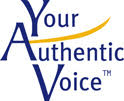
Courtesy of Flickr user Cameron Adams
When was the last time you were asked for your knowledge or opinion on a subject and you didn’t know the answer? What do you do when you’re on the spot, especially in a high value meeting? Or in front of 100, 500 or 1,000 people? Even if you’ve pulled together coherent, intelligent responses for everything you can think of, it’s always possible someone will ask one of those unexpected questions, or challenge you on a point you’ve made, and you don’t know how to respond.
Enter the following template. I love templates. I use them as a starting point for a lot of communication situations. They help us take something that could seem big and unwieldy and put it into a form. They can also help us flesh out a small point to provide context and meaning.
When you get an unexpected question or comment, you need time to consider your answer, which you don’t have in the heat of the moment. What you can do, while your brain is scouring the files for the answer, is communicate your understanding of the big picture, share some insights into your process, and affirm your commitment to the work and/or organization.
While you’ll alter these steps to fit your situation, I think you’ll find them a helpful guide for those unexpected questions or challenges.
- Pause. Say, “Thanks so much for asking.”
- Address “why” this is an important question. Clarify what you understand the questioner is asking, and then share why this subject is significant in terms of the context – your business, direction, or topic.
- Share “what” is involved. What do you consider when answering this question?
- Share the “how.” What are the specifics of your process? Share an example of how you are addressing the subject, if you have one. Share your intention to keep the person/group up to date as you progress (if applicable).
- Ask the questioner if this answers the question. Follow up with a question that takes the conversation further, or simply asks the questioner his or her answer to the same question, if appropriate. “What do you think about . . . ?”
- Make a value-based statement. For example, why you’re glad he or she asked, how it contributes to the conversation, or the progress of the organization.
If you’ve thought of the answer while you’re going through these steps, you can insert the answer wherever it makes sense, possibly right before step five.
By using this format, you communicate an in-depth understanding of your topic, and showcase your knowledge, expertise, and leadership on the topic. Many a speaker has remarked that the best part of a speaking engagement is the opportunity to answer questions because that’s when you can meet your listeners’ specific needs while showcasing a more in-depth knowledge on your subject.
If you get tongue tied when asked for an answer you don’t know, try this approach and let me know how it goes. As always, I’d love to support you! I can be reached at andrea@andreabeaulieu.com.

Leave A Comment